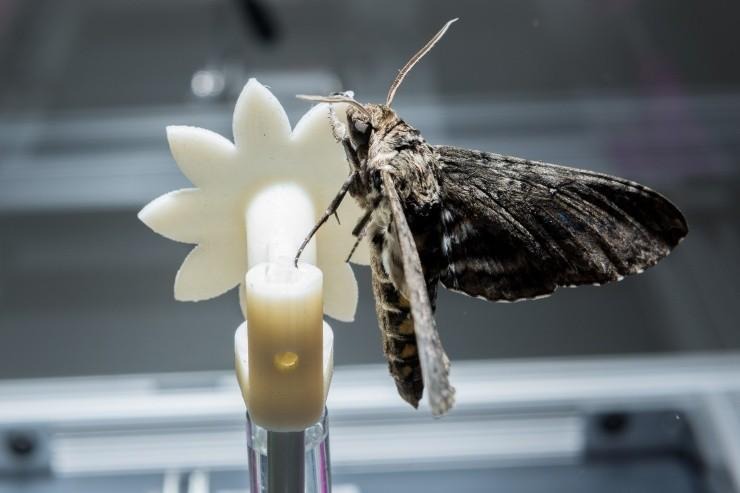Moths Could Gift Low-Light Vision To New Micro-Drones
Moths might not be the first animals you'd think to emulate when you're designing new micro-drones, but robots could learn at lot from how their eyes work. A team at Georgia Institute of Techology figured out that moths can purposefully slow their brain activity so as to see better in low-light conditions, keeping their nectar-sipping position at flowers even when the plants are moving, and potentially opening the door to future machine vision systems that can react accurately even in the depth of night.
The researchers cooked up a robotic flower, using actuators from a 3D printer to move it at up to twenty oscillations per second. That's about ten times the rate that flowers would commonly move in real life, but the moths – beating their wings at around 25 strokes per second – were able to adjust their direction of movement with just about every wingstroke.
That, the team points out, is "a major sensing, computational and control accomplishment."
"To maneuver like this is really quite challenging," Simon Sponberg, an assistant professor in the School of Physics and School of Applied Physiology at the Georgia Institute of Technology, said of the adept little bugs. "It's an extreme behavior from both a sensory and motor control perspective."

Moths were known to have specialized eye structures to allow them to make the most of dusk and dawn light, but that alone wasn't believed to be enough to handle the sort of accurate flight necessary. Adjusting the rate of movement of the nectar-dispensing robotic flowers, and the ambient light around them, the team was able to test out just how capable the insects' brains were.
Infrared cameras tracked movement of the hawkmoths, and then the luminance dependent processing capabilities of the bug's brain was calculated. Turns out, though there's a cognitive load impact if you slow down too significantly, the moths have figured out a balance between that and the maximum rate of movement of the plants in real life.
The implications could be significant, as project co-funders the National Science Foundation and Air Force Office of Scientific Research hoped. "If we want to have robots or machine vision systems that are working under this broad range of conditions," Sponberg said, "understanding how these moths function under these varying light conditions would be very useful."
Future iterations of the research will put the fast-moving flowers into a wind tunnel, potentially shaping new micro-drone wings with lessons learned from the aerodynamics of the moth's wings.
SOURCE Georgia Tech
